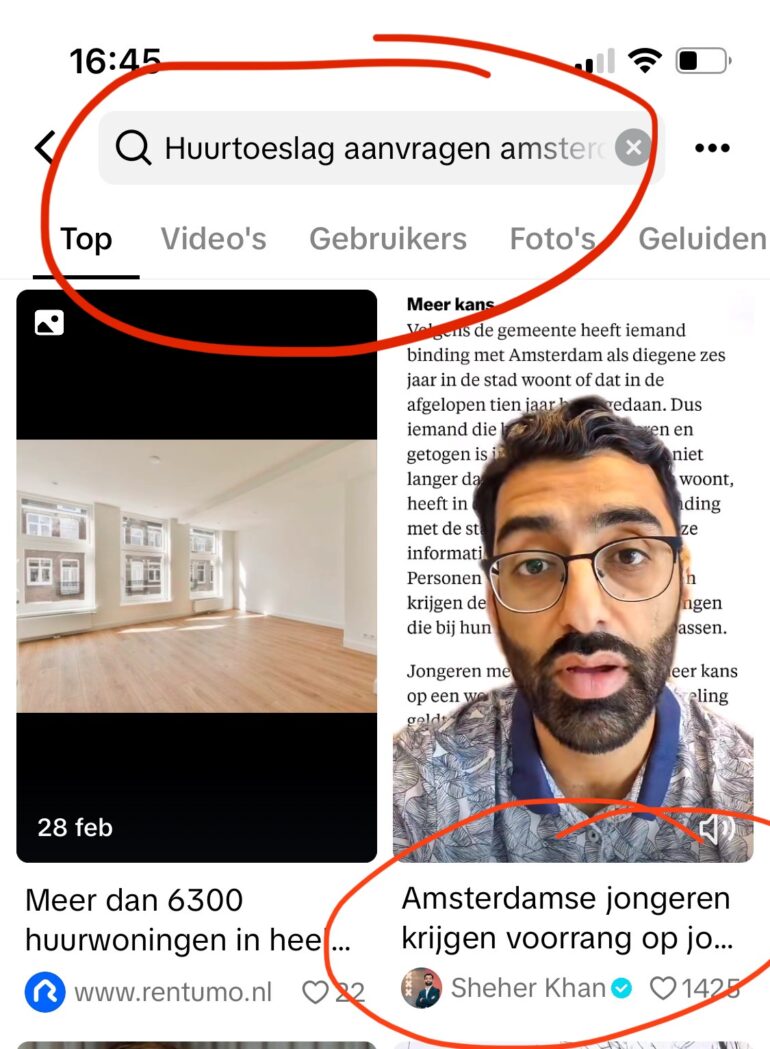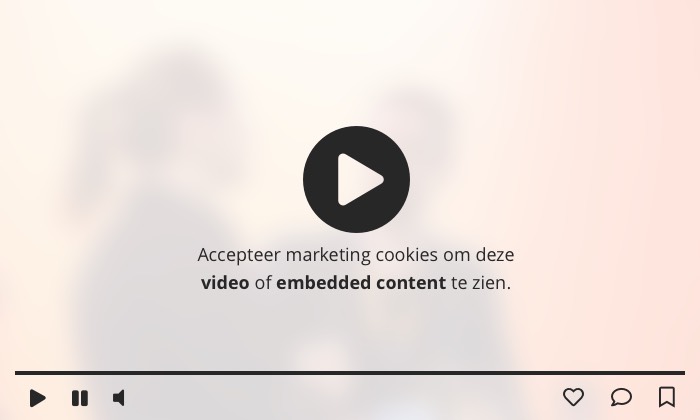Social media is entering a completely new phase. The biggest shift is moving from the traditional engagement model, where people interacted with the pages they followed, to a TikTok-inspired “for you” algorithm.
This revolves around content that responds to users’ interests and triggers, with the creator as a major producer, star in their own show and authentic connector. Creator archetypes are the new ratings guns, the André van Duinen of today. Always looking for the latest trends, relevance and formats with which they can entertain their audience. It’s all about attention, everyone wants some of it, and the attention span is shorter than ever.
For many municipalities this sounds overwhelming – and it is. For years you invested in pages, strategies and your team, and now everything seems to be changing again. Suddenly everything has to be a Reel, you have to collaborate with erratic creators and navigate a jungle of AI tools. It asks a lot, perhaps too much.
Then there is the ethical dilemma: to what extent do you as a municipality want to contribute to trends that may be harmful? Formats like Instagram Reels are designed to keep users scrolling endlessly, while AI can undermine the authenticity of content. At the same time, these developments also offer enormous opportunities to distribute local content more intelligently. A well-considered strategy is the basis.
These are the 5 social media trends for 2025 that you as a municipality should do something about, or very consciously not.
1. Short-form video at the core of your strategy?
In 2025, short-form video will remain the dominant content form. Whether it’s TikTok, Instagram, Facebook, YouTube or even LinkedIn, the platforms are all betting heavily on short, powerful videos that quickly grab attention. Algorithms reward this type of content because it often results in immediate engagement. In other words, it is addictive.
This is not to say that it is easy to score with short-form. The opposite is true. In addition to the necessary technical skills, it requires a strategy that is tailored per platform to the algorithm and the users there. And long-form content? It remains indispensable, more about that later.
Tip: test your Instagram Reels with non-followers with Trial Reels. Try different hooks, sounds, or tempos and see what works. This way you bounce back those cringe videos that colleagues just want to throw online before it’s too late.
2. Micro-virality and niche experts for local engagement
Globally, it is no longer about mass reach, but about real impact within the community. So beneficial for the municipality. Major influencers are making way for niche experts and micro-virality: content that goes viral within small but committed communities. Made by creators focused on specific topics and local issues. This type of content is often more authentic and creates a bond between creator and target group.
Tip: choose one always-on content strategy instead of short campaigns. This is how you build long-lasting, authentic connections and deep involvement.
Keep It Real
A good example is Keep It Real, a social project in Amsterdam South East. Experienced experts from the neighborhood, who speak the language and know the problems, help young people in difficult situations to make better choices. They share their life lessons and engage in conversation through educational workshops. The message is spread online via a podcast, in which short video snippets link to more in-depth content. One reinforces the other. This always-on approach reaches thousands of young people from the neighborhood, exactly the group it affects.
Yup on Jordanees
Another example is the popular TikTok series De Yup en de Jordanees by Kiki Bosman. Kiki, as ‘Yup’, conducts conversations with residents of the Jordaan who often feel driven away by the same Yup. Recipe for disaster, you might say, but nothing could be further from the truth. This honest, straightforward approach leads to hilarious anecdotes, personal insights and sometimes emotional stories that narrow the gap between two groups. The idea is simple: starting the conversation, regardless of your background, creates connection and a stronger community.
3. User-generated content (UGC): community in action
Municipalities are increasingly discovering the power of user-generated content (UGC) as a trend to strengthen local involvement. In addition to deploying smart makers, municipalities can share stories from residents and employees about municipal projects or local themes. UGC makes it possible to collect authentic, personal stories, which ensures stronger and more direct communication with the local population.
Tip: leverage the trust that local makers have already built. They have already created an environment in which residents feel freer to make their voices heard. This leads to a cycle of involvement: powerful messages from makers that appeal to the community, reinforced by the stories of residents themselves.
A good example of effective UGC comes from Rotterdam. Here the municipality worked together with local resident Charles, who provided an accessible explanation about how to efficiently dispose of cardboard after Black Friday. By combining practical tips with a touch of humor and interaction, such as the question “Which type are you: the tearer, pestle or cutter?”, involvement was increased.
4. The hybrid model: video and text that reinforce each other
Although video shorts are central, text remains indispensable. Especially on platforms such as LinkedIn, newsletters and websites, where in-depth informational content works best. The hybrid model, in which video, audio and text reinforce each other, is becoming increasingly important. Think of subtitles and voice-overs that make videos more accessible, or combining a podcast with video. You can then use short snippets as teasers for the in-depth podcast. By smartly mapping your content, you respond to the different ways in which your target group consumes.
In addition, text plays a key role in another important shift: social search. Platforms such as TikTok, Instagram and YouTube are increasingly used as search engines, especially by Gen Z. Municipalities can respond to this with short videos about relevant themes that young people often search for, with SEO-proof captions, such as information about housing or mental health. This way you ensure that your content is found where young people are looking and you increase your reach and impact.

Tip: invest in YouTube. It is the only platform where long- and short-form videos reinforce each other. In an age of scroll fatigue, in-depth educational videos not only help ethically, but also better explain complex topics.
5. AI as a tool in content creation
AI provides powerful tools for both visual and textual content. With Midjourney you can quickly generate images for mood boards, storyboards and designs. It is an excellent tool for brainstorming sessions and is developing rapidly. Tools such as Runway and Kling.AI stills effortlessly into videos, making your content more dynamic. From simple illustrations for work to high-end visuals for urban projects, such as directly generating designs for a new village square, all based on one photo. AI makes it possible.
For text, AI helps with editing, strategy development and social media analytics for targeted follow-ups. This makes communication more effective and faster.
But be selective: first determine the purpose of AI and weigh the benefits. Work with experts to choose the right tools and rely on prompters with specific experience in AI. They help you get the most out of a tool.
Also be aware of pitfalls such as loss of authenticity, or your job (just kidding, haha). But seriously, the biggest pitfall is not doing anything for fear of risk. AI developments are moving fast: it is adapt or lag behind.
Regarding legal frameworks, my advice for ‘innocent’ applications on social media: first act, then frame. One learns through play. Much is still unclear, so start small and discover what works. Experiment! It is important to continue to think ahead and embrace AI.
Tip: consult with the legal department and set up a pilot for some AI creations.
Plenty of opportunities for municipalities on social media
In 2025, there will again be plenty of opportunities for municipalities to renew their communication on social media and strengthen engagement with residents. Short-form video, neighborhood-oriented approaches, niche experts and AI, it’s all promising. But don’t let it fool you! Trends are only effective if they support a solid foundation.
Sometimes it can be a smart choice to do nothing for a while or even take a step back. The municipal relevance is certainly not diminished. Unlike commercial brands, the resident as a customer cannot simply go somewhere else. However, if as a municipality you mainly want something from the citizen in 2025, then it is time to embrace these trends.
Header image source: wjarek / Shutterstock.com
Source: www.frankwatching.com



